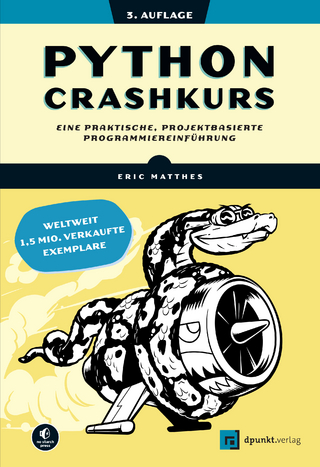
Python for SAS Users
Apress (Verlag)
978-1-4842-5000-6 (ISBN)
It is estimated that there are three million or more SAS users worldwide today. As the data science landscape shifts from using SAS to open source software such as Python, many users will feel the need to update their skills. Most users are not formally trained in computer science and have likely acquired their skills programming SAS as part of their job.
As a result, the current documentation and plethora of books and websites for learning Python are technical and not geared for most SAS users. Python for SAS Users provides the most comprehensive set of examples currently available. It contains over 200 Python scripts and approximately 75 SAS programs that are analogs to the Python scripts. The first chapters are more Python-centric, while the remaining chapters illustrate SAS and corresponding Python examples to solve common data analysis tasks such as reading multiple input sources, missing value detection, imputation, merging/combining data, and producing output. This book is an indispensable guide for integrating SAS and Python workflows.
What You’ll Learn
Quickly master Python for data analysis without using a trial-and-error approach
Understand the similarities and differences between Base SAS and Python
Better determine which language to use, depending on your needs
Obtain quick results
Who This Book Is For
SAS users, SAS programmers, data scientists, data scientist leaders, and Python users who need to work with SAS
Randy Betancourt’s professional career has been in and around data analysis. His journey began by managing a technical support group supporting over 2,000 technical research analysts and scientists from the US Environmental Protection Agency at one of the largest mainframe complexes run by the federal government. He moved to Duke University, working for the administration, to analyze staff resource utilization and costs. There, he was introduced to the politics of data access as the medical school had most of the data and computer resources. He spent the majority of his career at SAS Institute Inc. in numerous roles, starting in marketing and later moving into field enablement and product management. He subsequently developed the role for Office of the CTO consultant. Randy traveled the globe meeting with IT and business leaders discussing the impact of data analysis to drive their business. And they also discussed challenges they faced. At the same time, he talked to end users, wanting to hear their perspective. Together, these experiences shaped his understanding of trade-offs that businesses make allocating scarce resources to data collection, analysis, and deployment of models. More recently, he has worked as an independent consultant for firms, including the International Institute of Analytics, Microsoft's SQL Server group, and Accenture's Applied Intelligence platform. Sarah Chen has 12 years of analytics experience in banking and insurance, including personal auto pricing, compliance, surveillance, fraud analytics, sales analytics, credit risk modeling for business, and regulatory stress testing. She is a Fellow of both the Casualty Actuarial Society and the Society of Actuaries (FCAS, FSA), an actuary, data scientist, and innovator. Sarah's career began with five and a half years at Verisk Analytics in the Personal Auto Actuarial division, building predictive models for various ISO products. At Verisk, she learned and honed core skills in data analysis and data management. Her skills and domain expertise were broadened when she moved to KPMG, working with leading insurers, banks, and large online platforms on diverse business and risk management problems.
Chapter 1: Why Python.- Chapter 2: Python Types and Formatting.- Chapter 3: pandas Library.- Chapter 4: Indexing and GroupBy.- Chapter 5: Data Management.- Chapter 6: pandas Readers and Writers.- Chapter 7: Date and Time.- Chapter 8: saspy Module.- Appendix A: Generating the Tickets DataFrame.- Appendix B: Many-to-Many Use Case.-
| Erscheinungsdatum | 24.09.2019 |
|---|---|
| Zusatzinfo | 119 Illustrations, black and white; XVII, 434 p. 119 illus. |
| Verlagsort | Berkley |
| Sprache | englisch |
| Maße | 178 x 254 mm |
| Themenwelt | Informatik ► Programmiersprachen / -werkzeuge ► Python |
| Schlagworte | Data Science • Data Science Python • Data Science Python and SAS • Data Science SAS • New Skills for Data Scientists • PROC Python • Python • Python for Data Science • Python for SAS Users • SAS • SAS and Python • SAS Functions in Python • SAS How-to for Python |
| ISBN-10 | 1-4842-5000-1 / 1484250001 |
| ISBN-13 | 978-1-4842-5000-6 / 9781484250006 |
| Zustand | Neuware |
| Haben Sie eine Frage zum Produkt? |
aus dem Bereich


